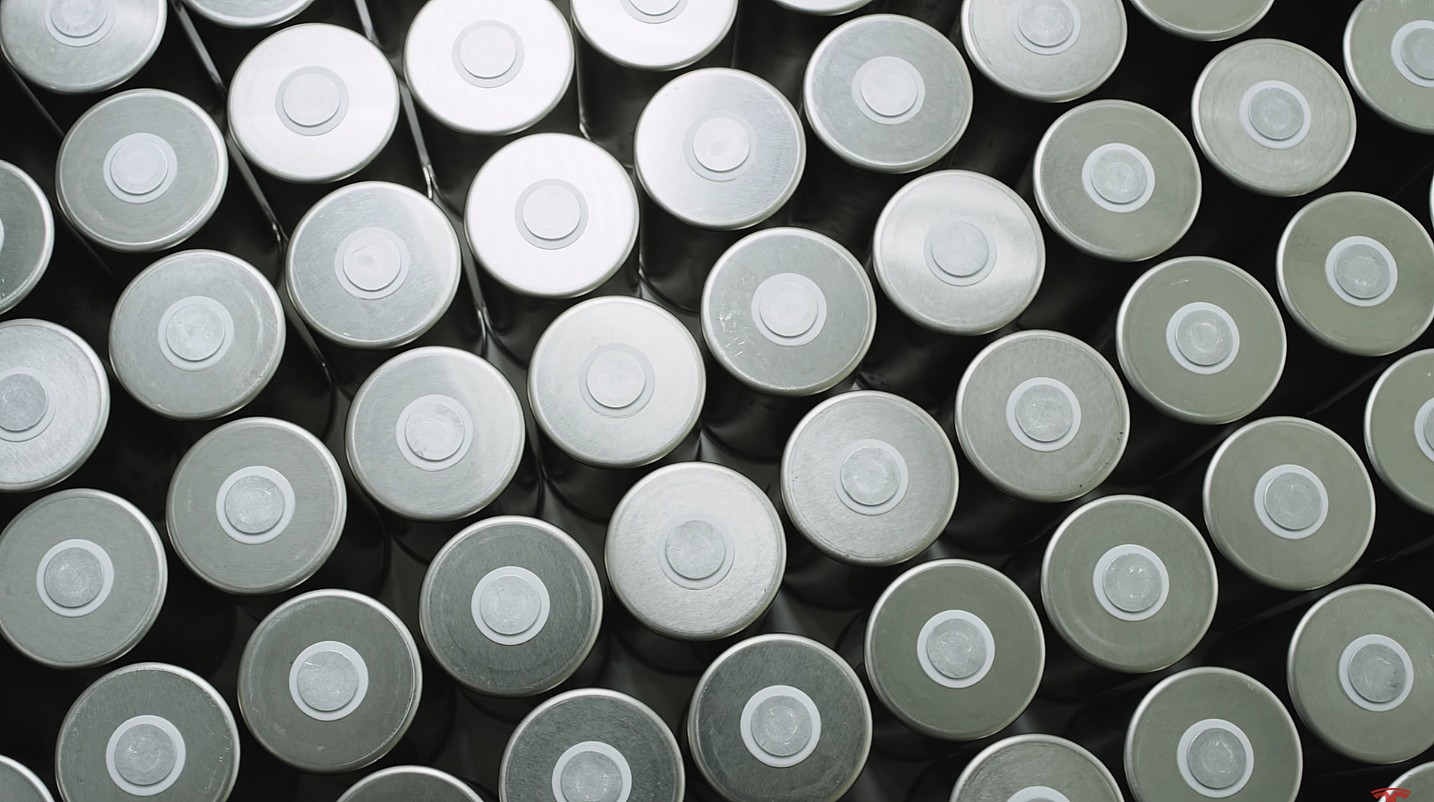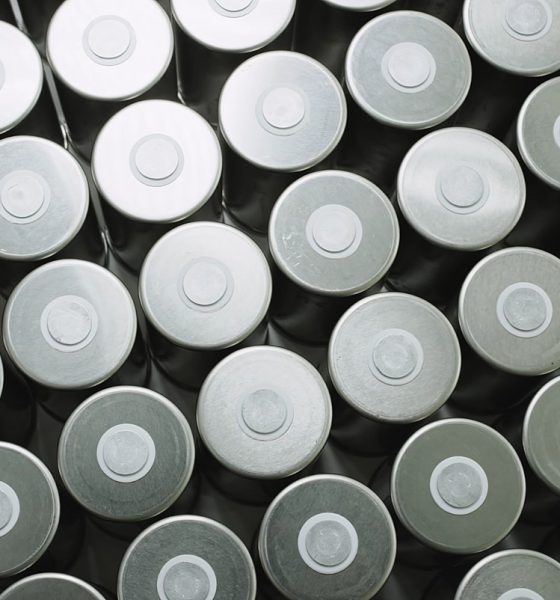

News
Tesla China supplier CATL launches cost-effective sodium-ion battery cell
Tesla China battery cell supplier Contemporary Amperex Technology Co. Ltd. (CATL) unveiled its sodium-ion battery earlier today, along with a solution that could integrate the cells with lithium-ion batteries in a single pack. The sodium-ion cells are a more cost-effective option than the lithium-ion batteries, opening the door for lower prices in the EV battleground market of China.
The introduction of sodium-ion cells is an alternative option to the lithium-ion cells Tesla has used in its vehicles. CATL Chairman Zeng Yuqun highlighted the favorable characteristics of utilizing sodium-ion cells during the company’s online launch event earlier today.
“Sodium-ion batteries have unique advantages in low-temperature performance, fast charging, and environmental adaptability,” Zeng said. “Moreover, they’re compatible and complementary with lithium-ion batteries. Diversified technical routes are an important guarantee for the long-term development of the industry.”
CATL said it will set up a supply chain for the new cells in 2023. The cells do not contain lithium, cobalt, or nickel, but the battery manufacturer did not disclose any cost details of the new cell.
Tesla has long been working with suppliers for battery cells and has partnerships with Panasonic, LG Chem, and CATL to supply its electric vehicles with batteries. While working with third-party suppliers, the company has also researched on its own with the help of a battery team at Dalhousie University with legendary cell scientist Jeff Dahn. Tesla is not opposed to exploring battery cell chemistries favorable for electric vehicles, especially if the new cells can create more range, power, or a longer life cycle.
CATL has worked with Tesla since Gigafactory Shanghai started producing vehicles in late 2019. Tesla started customer deliveries in early 2020 at the Chinese plant and has relied on CATL’s world-class battery manufacturing to keep up with growing demand in China. CATL sold 34.1 GWh in the first half of 2021, up 234% year-over-year, according to Automotive News China. The company has a 30 percent market share, but the company has been struggling with the rising cost of lithium carbonate, which has doubled this year. Additionally, nickel has also increased in price this year.
Due to increased demand, lithium prices are expected to trend higher this year and into next year, especially as more automakers extend into the electric automotive sector. These forecasts have launched battery makers like CATL into a widespread effort to experiment and develop other cell chemistries that would be favorable for their clients, and sodium-ion batteries are a great alternative.
Despite the sodium-ion cell’s reputation for somewhat lower energy density, CATL said that its Research and Development team had reached an energy density of 160 watt-hours per kilogram, and it should exceed 200 Wh/kg in the coming years as more experimentation continues. For comparison, lithium-ion cells can reach about 285 Wh/kg, according to K. M. Abraham, a research professor at Northeastern University. Interestingly, the solution CATL also unveiled at the event is also expected to compensate for the reduced energy density of the sodium-ion cell, while preserving the advantage the cell makeup has to offer.
News of the new cell shot Tesla stock up over 4.6% in early trading hours on Thursday. At the time of writing, TSLA stock traded at $677.07, up $30.23.
Disclosure: Joey Klender is a TSLA Shareholder.

Elon Musk
Elon Musk’s X will start using a Tesla-like software update strategy
The initiative seems designed to accelerate updates to the social media platform, while maintaining maximum transparency.

Elon Musk’s social media platform X will adopt a Tesla-esque approach to software updates for its algorithm.
The initiative seems designed to accelerate updates to the social media platform, while maintaining maximum transparency.
X’s updates to its updates
As per Musk in a post on X, the social media company will be making a new algorithm to determine what organic and advertising posts are recommended to users. These updates would then be repeated every four weeks.
“We will make the new 𝕏 algorithm, including all code used to determine what organic and advertising posts are recommended to users, open source in 7 days. This will be repeated every 4 weeks, with comprehensive developer notes, to help you understand what changed,” Musk wrote in his post.
The initiative somewhat mirrors Tesla’s over-the-air update model, where vehicle software is regularly refined and pushed to users with detailed release notes. This should allow users to better understand the details of X’s every update and foster a healthy feedback loop for the social media platform.
xAI and X
X, formerly Twitter, has been acquired by Elon Musk’s artificial intelligence startup, xAI last year. Since then, xAI has seen a rapid rise in valuation. Following the company’s the company’s upsized $20 billion Series E funding round, estimates now suggest that xAI is worth tens about $230 to $235 billion. That’s several times larger than Tesla when Elon Musk received his controversial 2018 CEO Performance Award.
As per xAI, the Series E funding round attracted a diverse group of investors, including Valor Equity Partners, Stepstone Group, Fidelity Management & Research Company, Qatar Investment Authority, MGX, and Baron Capital Group, among others. Strategic partners NVIDIA and Cisco Investments also continued support for building the world’s largest GPU clusters.
News
Tesla FSD Supervised wins MotorTrend’s Best Driver Assistance Award
The decision marks a notable reversal for the publication from prior years, with judges citing major real-world improvements that pushed Tesla’s latest FSD software ahead of every competing ADAS system.

Tesla’s Full Self-Driving (Supervised) system has been named the best driver-assistance technology on the market, earning top honors at the 2026 MotorTrend Best Tech Awards.
The decision marks a notable reversal for the publication from prior years, with judges citing major real-world improvements that pushed Tesla’s latest FSD software ahead of every competing ADAS system. And it wasn’t even close.
MotorTrend reverses course
MotorTrend awarded Tesla FSD (Supervised) its 2026 Best Tech Driver Assistance title after extensive testing of the latest v14 software. The publication acknowledged that it had previously criticized earlier versions of FSD for erratic behavior and near-miss incidents, ultimately favoring rivals such as GM’s Super Cruise in earlier evaluations.
According to MotorTrend, the newest iteration of FSD resolved many of those shortcomings. Testers said v14 showed far smoother behavior in complex urban scenarios, including unprotected left turns, traffic circles, emergency vehicles, and dense city streets. While the system still requires constant driver supervision, judges concluded that no other advanced driver-assistance system currently matches its breadth of capability.
Unlike rival systems that rely on combinations of cameras, radar, lidar, and mapped highways, Tesla’s FSD operates using a camera-only approach and is capable of driving on city streets, rural roads, and freeways. MotorTrend stated that pure utility, the ability to handle nearly all road types, ultimately separated FSD from competitors like Ford BlueCruise, GM Super Cruise, and BMW’s Highway Assistant.
High cost and high capability
MotorTrend also addressed FSD’s pricing, which remains significantly higher than rival systems. Tesla currently charges $8,000 for a one-time purchase or $99 per month for a subscription, compared with far lower upfront and subscription costs from other automakers. The publication noted that the premium is justified given FSD’s unmatched scope and continuous software evolution.
Safety remained a central focus of the evaluation. While testers reported collision-free operation over thousands of miles, they noted ongoing concerns around FSD’s configurable driving modes, including options that allow aggressive driving and speeds beyond posted limits. MotorTrend emphasized that, like all Level 2 systems, FSD still depends on a fully attentive human driver at all times.
Despite those caveats, the publication concluded that Tesla’s rapid software progress fundamentally reshaped the competitive landscape. For drivers seeking the most capable hands-on driver-assistance system available today, MotorTrend concluded Tesla FSD (Supervised) now stands alone at the top.
News
Elon Musk’s Grokipedia surges to 5.6M articles, almost 79% of English Wikipedia
The explosive growth marks a major milestone for the AI-powered online encyclopedia, which was launched by Elon Musk’s xAI just months ago.

Elon Musk’s Grokipedia has grown to an impressive 5,615,201 articles as of today, closing in on 79% of the English Wikipedia’s current total of 7,119,376 articles.
The explosive growth marks a major milestone for the AI-powered online encyclopedia, which was launched by Elon Musk’s xAI just months ago. Needless to say, it would only be a matter of time before Grokipedia exceeds English Wikipedia in sheer volume.
Grokipedia’s rapid growth
xAI’s vision for Grokipedia emphasizes neutrality, while Grok’s reasoning capabilities allow for fast drafting and fact-checking. When Elon Musk announced the initiative in late September 2025, he noted that Grokipedia would be an improvement to Wikipedia because it would be designed to avoid bias.
At the time, Musk noted that Grokipedia “is a necessary step towards the xAI goal of understanding the Universe.”
Grokipedia was launched in late October, and while xAI was careful to list it only as Version 0.1 at the time, the online encyclopedia immediately earned praise. Wikipedia co-founder Larry Sanger highlighted the project’s innovative approach, noting how it leverages AI to fill knowledge gaps and enable rapid updates. Netizens also observed how Grokipedia tends to present articles in a more objective manner compared to Wikipedia, which is edited by humans.
Elon Musk’s ambitious plans
With 5,615,201 total articles, Grokipedia has now grown to almost 79% of English Wikipedia’s article base. This is incredibly quick, though Grokipedia remains text-only for now. xAI, for its part, has now updated the online encyclopedia’s iteration to v0.2.
Elon Musk has shared bold ideas for Grokipedia, including sending a record of the entire knowledge base to space as part of xAI’s mission to preserve and expand human understanding. At some point, Musk stated that Grokipedia will be renamed to Encyclopedia Galactica, and it will be sent to the cosmos.
“When Grokipedia is good enough (long way to go), we will change the name to Encyclopedia Galactica. It will be an open source distillation of all knowledge, including audio, images and video. Join xAI to help build the sci-fi version of the Library of Alexandria!” Musk wrote, adding in a later post that “Copies will be etched in stone and sent to the Moon, Mars and beyond. This time, it will not be lost.”








